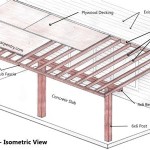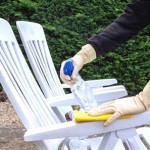Potted Patio Trees: A Guide to Selecting, Planting, and Maintaining
Potted patio trees offer a versatile and aesthetically pleasing solution for bringing greenery and vertical interest to outdoor spaces. They are particularly beneficial for individuals with limited yard space, such as those living in apartments, condominiums, or urban environments. The mobility and adaptability of container-grown trees allow for flexibility in design and the potential to adjust the landscape according to seasonal needs or personal preferences. Selecting the right tree species, understanding proper potting techniques, and implementing consistent maintenance practices are crucial for ensuring the long-term health and vitality of patio trees.
Selecting the Right Tree Species for Container Growing
The success of growing trees in pots largely depends on choosing species that are naturally suited to container environments. Certain tree varieties tolerate root restriction better than others, and some are more compact in size, making them ideal for smaller spaces. Factors to consider when selecting a patio tree include mature size, growth rate, sunlight requirements, hardiness zone, and susceptibility to pests and diseases.
Dwarf and semi-dwarf varieties are generally preferable for container growing as they are less likely to outgrow their pots quickly. Examples of suitable dwarf trees include dwarf citrus trees (e.g., Meyer lemon, calamondin orange), dwarf Japanese maples (e.g., Acer palmatum 'Bloodgood', 'Crimson Queen'), and dwarf fruit trees (e.g., columnar apple trees, dwarf peach trees). These varieties offer the aesthetic appeal and fruiting capabilities of their larger counterparts but remain manageable in a container environment.
Evergreen trees can provide year-round visual interest and privacy on patios. Boxwood (Buxus spp.), dwarf Alberta spruce (Picea glauca 'Conica'), and certain varieties of juniper (Juniperus spp.) are good choices for evergreen patio trees. Deciduous trees offer seasonal changes in foliage color and texture. Japanese maples, discussed previously, are particularly popular deciduous options, as are crape myrtles (Lagerstroemia indica) which offer vibrant blooms in summer and attractive bark in winter.
Considering the local climate is vital. Selecting trees that are hardy to the specific USDA hardiness zone ensures that they can withstand the winter temperatures and avoid damage from frost. Matching the tree's sunlight requirements to the available light on the patio is equally important. Most trees require at least six hours of direct sunlight per day to thrive, but some varieties tolerate partial shade.
Finally, consider the care requirements of each species. Some trees require more frequent watering or fertilization than others. Researching the specific needs of the chosen tree before planting can help prevent future problems and ensure the tree's long-term health.
The Importance of Proper Potting Techniques
Proper potting techniques are crucial for establishing a healthy root system and promoting vigorous growth. Selecting the appropriate pot size, using a well-draining potting mix, and following correct planting procedures are essential steps in the potting process.
The size of the pot directly impacts the tree's growth and overall health. A pot that is too small will restrict root growth, leading to stunted growth and nutrient deficiencies. A pot that is too large can retain excessive moisture, increasing the risk of root rot. As a general guideline, choose a pot that is slightly larger than the tree's root ball. As the tree grows, it may be necessary to repot it into a larger container every few years.
The type of potting mix is also critical. Garden soil is typically too dense for container growing and can compact easily, hindering drainage and aeration. A well-draining potting mix specifically formulated for containers is recommended. These mixes typically contain a blend of peat moss, perlite, vermiculite, and compost. The specific composition of the potting mix can be adjusted based on the needs of the tree species. For example, acid-loving trees such as azaleas and rhododendrons benefit from potting mixes with a lower pH.
When planting the tree, gently remove it from its nursery container and loosen any circling roots. Place a layer of potting mix at the bottom of the new container and position the tree in the center. Fill the remaining space with potting mix, ensuring that the top of the root ball is level with the soil surface. Water the tree thoroughly after planting to settle the soil and remove any air pockets. Adding a layer of mulch on top of the soil can help retain moisture and suppress weed growth.
Drainage is paramount. Pots must have adequate drainage holes to prevent waterlogging. Consider placing the pot on pot feet or bricks to elevate it slightly, further enhancing drainage. Regular inspection of the drainage holes is recommended to ensure that they are not clogged.
Maintaining Healthy Potted Patio Trees
Consistent maintenance practices are essential for ensuring the long-term health and vitality of potted patio trees. This includes proper watering, fertilization, pruning, pest and disease control, and winter protection.
Watering is one of the most critical aspects of tree care. Potted trees dry out more quickly than trees planted in the ground, so frequent watering is necessary, especially during hot and dry weather. The frequency of watering depends on the tree species, the size of the pot, the weather conditions, and the type of potting mix. It is important to allow the soil to dry slightly between waterings to prevent root rot. Checking the soil moisture level regularly and watering deeply when the top inch or two of soil feels dry is a good strategy.
Fertilization provides essential nutrients for growth and development. Container-grown trees rely entirely on the nutrients provided in the potting mix and through fertilization. A balanced, slow-release fertilizer specifically formulated for trees is recommended. Follow the manufacturer's instructions for application rates and frequency. Avoid over-fertilizing, as this can damage the roots and lead to nutrient imbalances.
Pruning helps to maintain the tree's shape, remove dead or diseased branches, and promote air circulation. The timing and type of pruning depend on the tree species. Generally, light pruning to remove dead, damaged, or crossing branches can be done at any time of year. More extensive pruning is best done during the dormant season. Researching the specific pruning requirements of the chosen tree is essential.
Pest and disease control is an ongoing process. Regularly inspect the tree for signs of pests or diseases, such as aphids, spider mites, scale, or fungal infections. Promptly address any problems with appropriate treatments. Horticultural oil, insecticidal soap, and fungicides can be used to control many common pests and diseases. Selecting disease-resistant tree varieties can also help prevent problems.
Winter protection is necessary for trees that are not hardy to the local climate. Container-grown trees are more susceptible to cold damage than trees planted in the ground because their roots are exposed to colder temperatures. Moving the tree to a sheltered location, such as a garage or shed, can help protect it from freezing temperatures. Alternatively, wrapping the pot with burlap or bubble wrap can provide insulation. Watering sparingly during the winter months is also recommended.
Repotting is an important part of maintaining potted trees. Over time, the potting mix can become compacted and depleted of nutrients. Repotting the tree into a larger container with fresh potting mix every few years can help revitalize its growth. The best time to repot is during the dormant season before new growth begins.
By carefully selecting the right tree species, using proper potting techniques, and implementing consistent maintenance practices, individuals can successfully grow healthy and beautiful patio trees that enhance their outdoor spaces for years to come. Regular monitoring and adjustments to care routines based on the tree's specific needs and the changing environmental conditions are key to long-term success.

10 Top Trees To Grow In Containers

7 Of The Best Trees For Patio Pots And Small Gardens Goodhomes

Your Container Garden Deserves A Pretty Tree Here Are 7 That Will Live Happily In Pot Sunset

Potted Trees Tuscan Garden Design

Patio Trees Best Potted For Flower Fragrance And

How To Select Trees That Will Work On Your Patio

Best Trees To Grow In Pots Bbc Gardeners World

10 Top Trees To Grow In Containers

How To Decorate With Trees Patio Potted Landscaping

Best Trees To Grow In Pots Bbc Gardeners World
Related Posts








